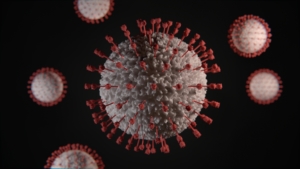COVID-19: how is it related to the skin?

In December 2019 unexplained pneumonia cases started arising in Wuhan, China due to a new pathogen called severe acute respiratory syndrome coronavirus 2 (SARS-CoV-2) and thus the disease was named Coronavirus Disease 2019 (COVID-19). Cases started spreading rapidly around the globe and on March 12th World Health Organization (WHO) declared it as a pandemic. Some of the clinical signs associated with it are fever, fatigue and dry cough. In addition to presenting symptoms and signs, nasopharyngeal and oropharyngeal swab can aid in diagnosis.
There are very limited data in literature about the cutaneous manifestation of COVID-19 so far, however, data collected from 88 patients in Lecco, Italy in which 14 of them presented with skin rash mostly affecting the trunk region. In addition, three patients presented with urticaria and one patient had chickenpox-like vesicles. It was concluded that the skin symptoms observed in COVID-19 were frequently seen in common viral infections. Furthermore, the severity of the skin symptoms did not seem to correlate with the severity of the disease. Due to additional infection prevention steps taken by first-line healthcare workers, 97% of them reported having skin damages, some of which are dryness and desquamation. Sites involved were mainly the nasal bridge, hands, cheek, and forehead. Therefore, preventive measures must be taken which include emollients, barrier creams, and moisturizers especially before applying personal protective equipment. Further steps should be taken to maintain hand hygiene and moisturization such as using unscented soap and avoiding using too much. Additionally, washing hands with warm water instead of hot water and applying moisturizers immediately after drying hands.
In conclusion, further studies should be done on the specific skin symptoms associated with COVID-19 infection. Skin damage and dryness are common conditions, especially with frequent hand washing during the pandemic, therefore, additional measures need to be taken to prevent such conditions.
Written by: Khalid Al Dakheel, Medical Student @ KSU
Resources:
https://www.ncbi.nlm.nih.gov/pmc/articles/PMC7102542/
https://onlinelibrary.wiley.com/doi/abs/10.1111/jdv.16387
https://www.uclahealth.org/body.cfm?id=1397&action=detail&ref=5741&fr=true


